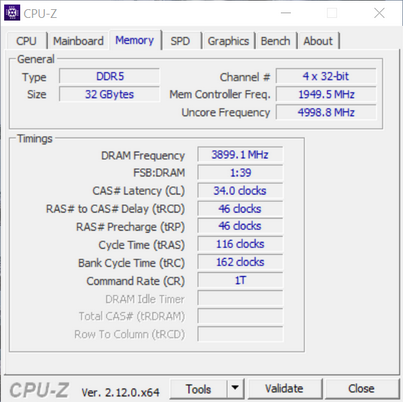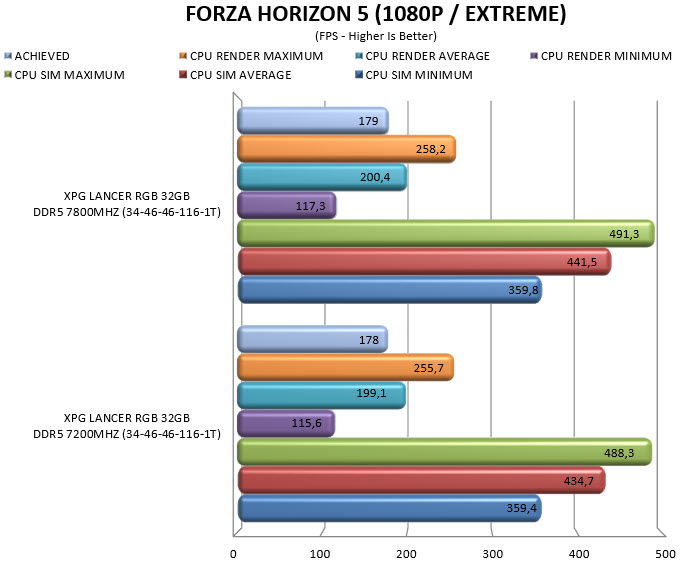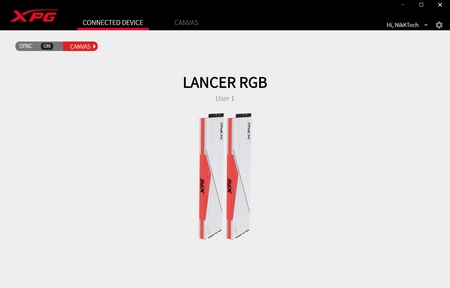INTRODUCTION

CUDIMM technology is a reality and even though it simplifies things compared even to XMP 3.0 and EXPO it could be a while before we see RAM kits surpassing 10.000MHz (MT/s) in the market. On top of that only the latest Z890 motherboards are CUDIMM compatible and so as of right now the market share is very small to say the least. On the contrary and as expected really the largest market share belongs to consumers looking to get more affordable RAM kits with speeds between 6000MHz and 7200MHz and so models like the LANCER RGB 32GB DDR5 7200MHz CL34 Dual-Channel Kit by XPG (ADATA) are quite popular.
XPG (XTREME PERFORMANCE GEAR) was established by ADATA to provide high-performance products to gamers, esports pros, and tech enthusiasts. We are committed to developing products that deliver extreme performance and therefore work closely with the gaming and esports community to gain insight into the real needs of users. We provide a full range of products from systems, components, peripherals to devices, and create them with the highest standards of stability, reliability, and performance in mind. We also develop products with sheer cool designs that have earned us several prestigious international awards, such as iF Design and Good Design. Beyond products, we play an active role in sponsoring and supporting esports events and teams globally to realize extreme gaming experiences at the highest levels.
The XMP 3.0 and EXPO compliant LANCER RGB line is currently available in both black and white colors and includes DDR5 kits available in both single (16/24/32GB) and dual (2x16/24/32GB) channel kits with frequencies going all the way up to 8000MHz (6000/6400/6800/7200/8000MHz), timings as low as CL30 (6000 CL30 - 6400MHz CL32 - 6800MHz CL38 - 7200MHz CL34 - 8000MHz CL38/CL40) and voltages ranging from 1.35V and all the way up to 1.45V (6000/6400MHz 1.35V - 6800/7200MHz 1.4V - 8000MHz 1.45V). Past the 43.56mm tall heatspreaders of the LANCER RGB modules XPG has placed SK Hynix single die modules (16Gbit density) and a total of 10 ARGB LEDs on top (9 available effects via the XPG Prime app and also compatible with all the leading RGB motherboard sync technologies like ASUS Aura Sync, GB RGB Fusion 2.0, MSI Mystic Light Sync and ASRock RGB LED). Typically, as with most of their RAM lines XPG covers the LANCER RGB DDR5 with a limited lifetime warranty.
SPECIFICATIONS AND FEATURES

THE LANCER RGB 32GB DDR5 7200MHZ CL34
As with past models XPG has used an orange box the front of which is taken by a product picture, anime like character and the product capacity and speed.
Two small openings at the rear allow you to check the stickers found on both modules.
Just the 2 modules are placed inside the package.
Typically, at the rear of the modules we find a small sticker with the serial number, barcode, speed and electrical requirements.
Under the plastic bar on top XPG has mounted a total of 10 RGB LEDs.
In terms of looks the LANCER RGB DDR5 may not be anything special but they do look nice (short clip is available on YouTube and TikTok).
Details on this kit are as usual available via AIDA64.
XPG PRIME
You can control the RGB LEDs of both modules either via your mother RGB software or the XPG PRIME one.
Initial screen allows you to link/unlink both modules and choose between 6 effects.
Second screen called Canvas allows you to use all 9 effects, adjust the brightness and of course select colors.
From the settings menu you can check the current software version (1.6.3 for this review) and check for updates.
TEST BED


TESTING METHODOLOGY

Thanks to XMP 3.0 and EXPO profiles the only thing one needs to do in order to run a brand new RAM kit at its advertised frequency, timings and voltages is to choose/enable it from within the BIOS and reboot. That being said if you're into overclocking you may not wish to use the main XMP/EXPO profile but instead to choose your very own frequency, timings and voltages to achieve even higher performance numbers and that's exactly what we'll also be doing during our DDR5 tests. To be more specific aside testing each kit with its XMP profile I'll also be upping the voltages (up to 1.4V for 1.35V kits – even though most kits can function at higher voltages I don’t recommend doing so - RAM modules that use 1.4V/1.45V/1.5V will be tested up to 1.45V/1.5V/1.55V respectively) and frequencies (200MHZ increments) until I find the maximum achievable stable frequency (those results will be entered into the OC charts). I also thought about upping voltages and reducing timings instead of increasing the frequency of the modules as high as it can go (always stable and without using 0.5-1V over stock) but the end results are pretty much identical.
As for the how I'll be testing each DDR5 Dual-Kit to arrive in the lab well there aren't that many benchmark programs that only test RAM (or at least RAM and CPU without anything else coming into play) but I’ve got most of them and so you will be seeing results from following benchmarking programs, AIDA64 Engineer Edition, Cinebench Release 23, MaxMemm2, Passmark Performance Test v10.1, Sisoftware Sandra Titanium and WPrime v2.11. All tests are performed on a fresh Windows 10 Pro x64 installation (complete with all updates until the day of this review) and are repeated a total of 6 times after which the average numbers get recorded into the charts.
* Since you all decided for me to use the Intel Core I9-13900K for graphics cards tests I’ll also be using that for DDR5 tests (5.8GHz P-Cores / 4.7GHz E-Cores / RING 4.9GHz) and in order to showcase potential gains between stock and overclocked clocks/frequencies I’ll also be using Forza Horizon 5 (1080p/Extreme Graphics). Still do keep in mind that I can't dedicate a high-end GPU solely for DDR5 reviews so each time i review such a kit I’ll be using a different chart (the card used will be listed above).
TEST RESULTS - XMP 3.0 PROFILE







TEST RESULTS – OVERCLOCK







TEST RESULTS – FORZA HORIZON 5

CONCLUSION

The LANCER RGB 32GB DDR5 7200MHz CL34 Dual-Channel Kit by XPG performed very well during my tests, both at stock speeds and overclocked. It was actually very easy to hit a stable 7800MHz at these timings by just going up to 1.44V from the stock 1.4V (however with minimal gains overall, especially when gaming). Of course, this kit doesn’t have anything to be jealous from others in terms of looks, although it would have been nice to have more than just 9 available effects. Finally, thanks to the many available kits and all of them being available in both black and white colors XPG can certainly cover more potential buyers.
Currently retailing for around USD170 inside the USA and for around 170Euros inside the EU the XPG LANCER RGB 32GB DDR5 7200MHz CL34 Dual-Channel Kit is priced just right. Unfortunately overall availability in both areas is far from great but if you do manage to come across it and are out in the market for a new DDR5 kit I strongly recommend checking out, especially since it’s good enough for the Golden Award.

PROS
- Build Quality
- Very Good Performance
- RGB Lighting (9 Effects)
- Overclocking Headroom
- Available In Black & White Colors
- Available Kits
- Limited Lifetime Warranty
CONS
- Overall Availability

 O-Sense
O-Sense





















.png)

